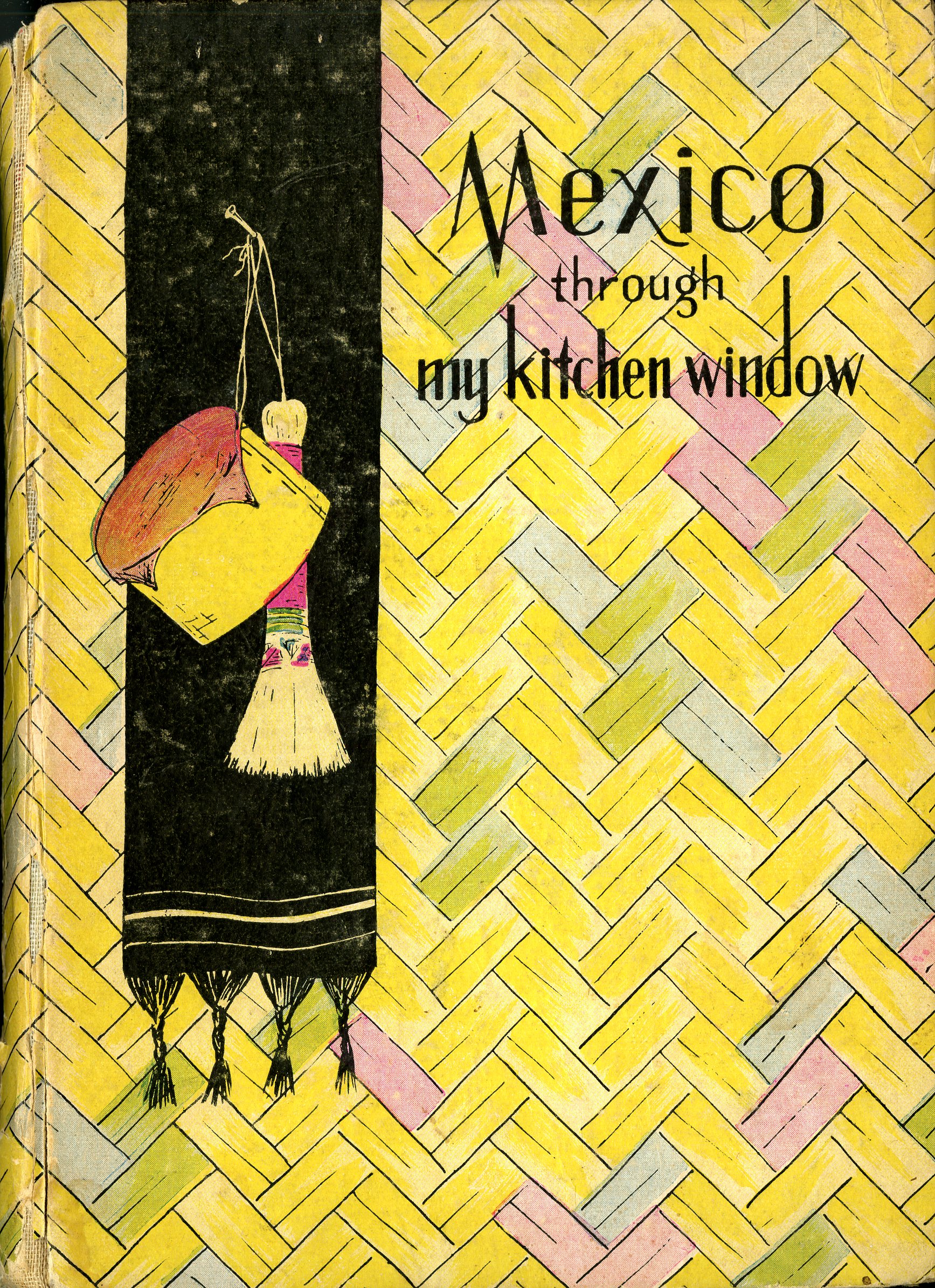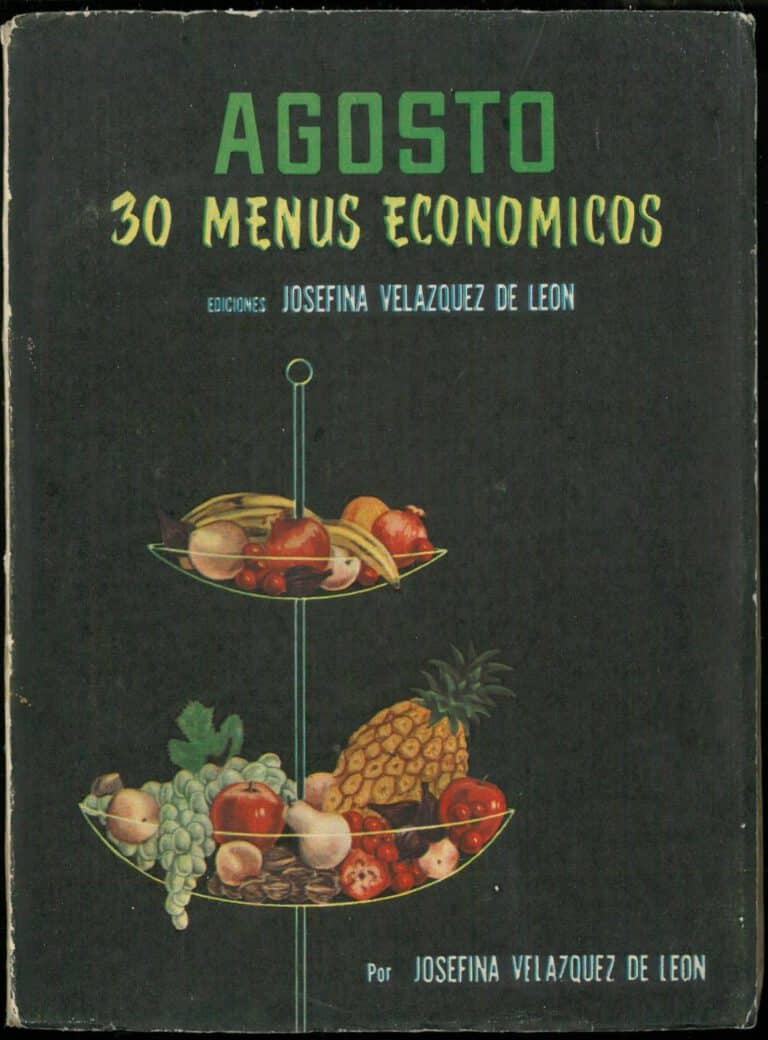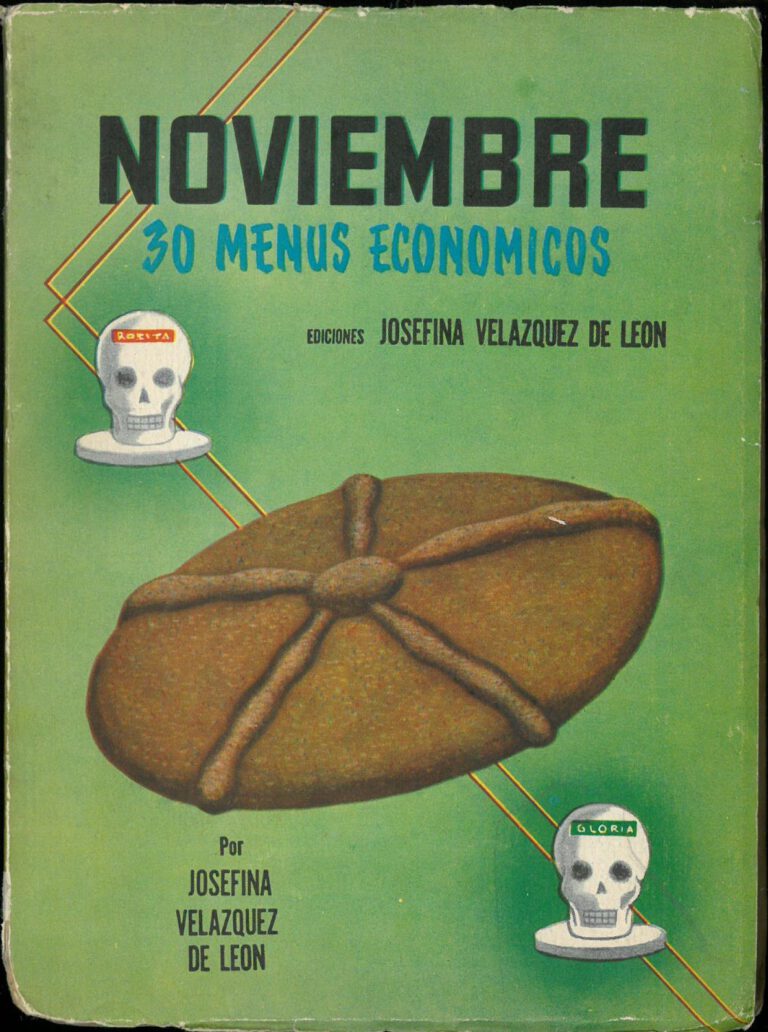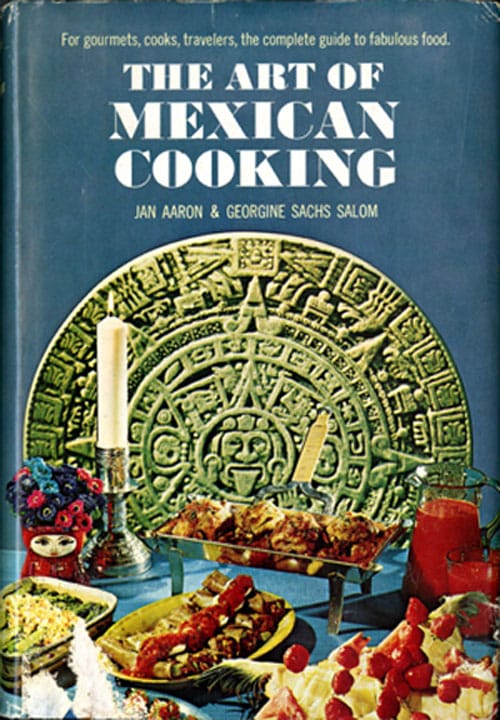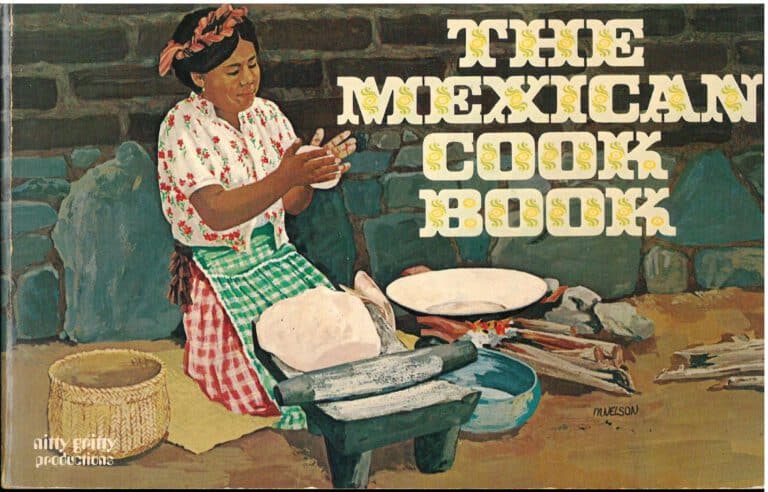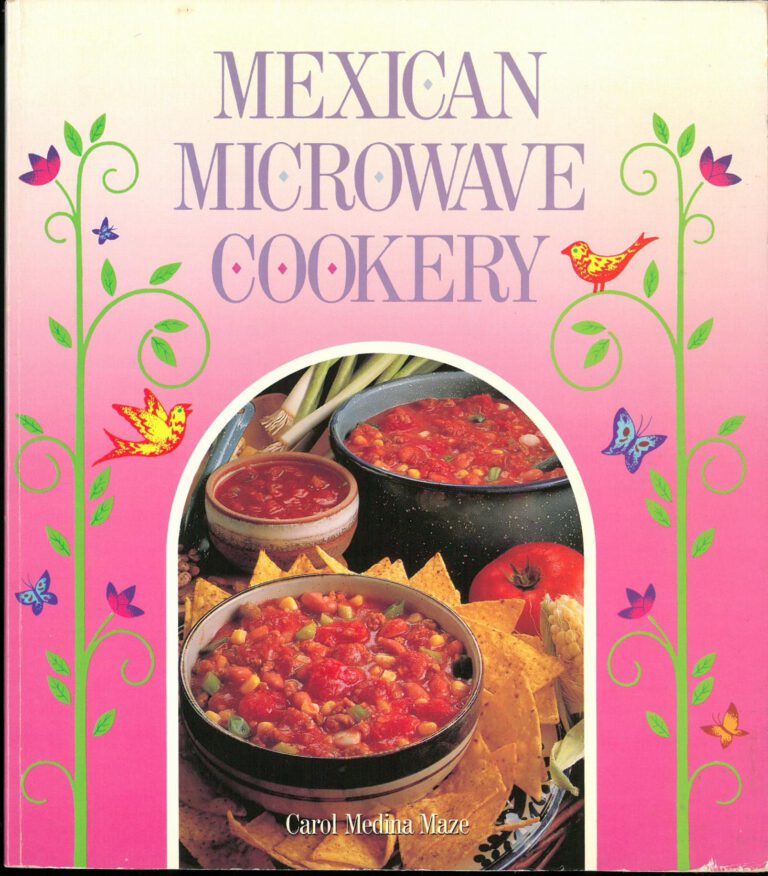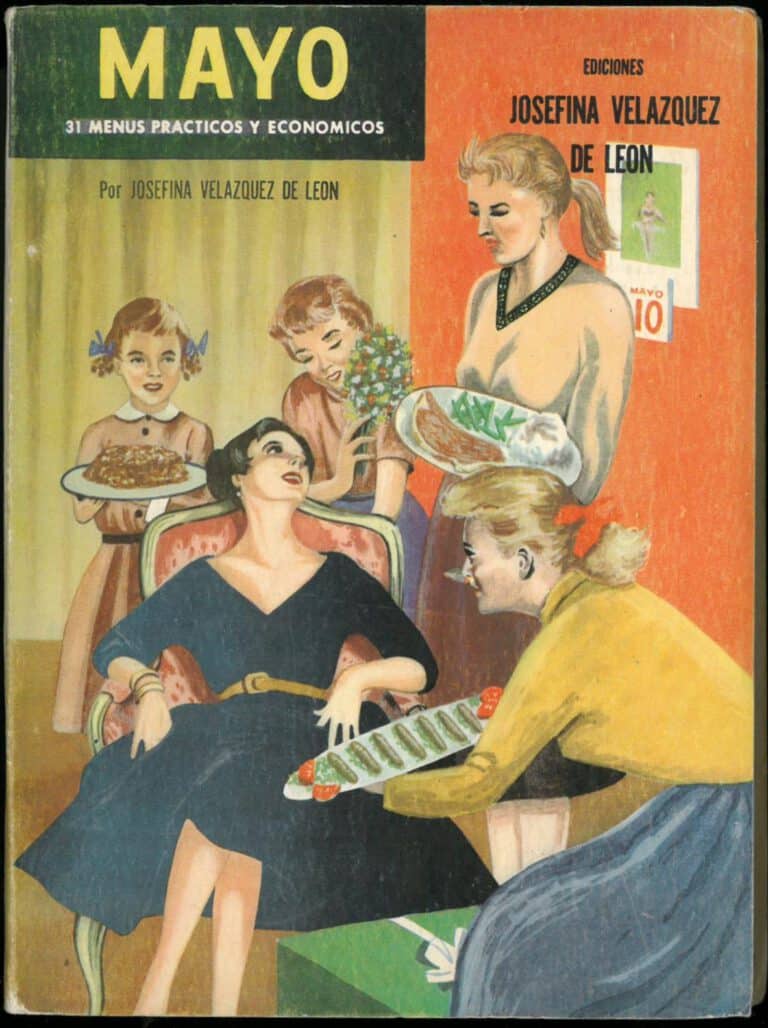Stuffed Green Peppers Mexican Style 1961
De Carbia, Maria A. Mexico Through My Kitchen Window. ed. Helen Corbitt (Boston : Houghton Mifflin Company, 1961.). [TX725 .C373 1961].
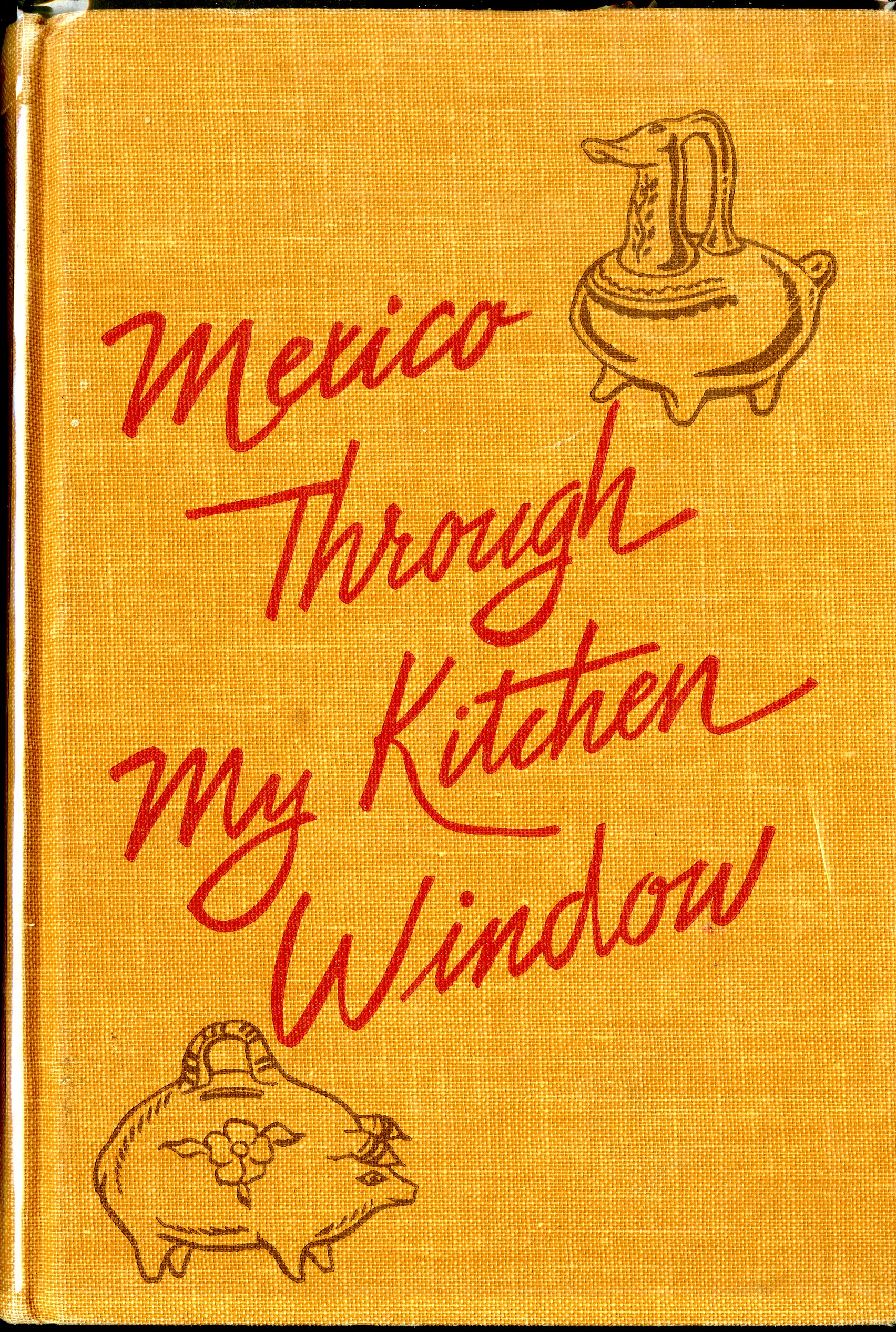
In 1961, Hougton Mifflin Company published a new edition of María A. de Carbia’s Mexico Through My Kitchen Window, edited by Helen Corbitt. It includes introductions by both Corbitt and de Carbia. Corbitt’s introduction describes de Carbia’s background and qualifications, and notes that in addition to cooking, de Carbia is an expert on flower arranging and gardening. Corbitt comments that “At first I was not sure her combination of ingredients would be acceptable to my palate, but while many of the flavors were new to me, I found myself going back for a second taste.”
De Carbia’s introduction is entitled “Some Facts About Food in Mexico” and seeks to dismantle American stereotypes about how Mexicans dine. She begins by saying:
There is in foreign countries the erroneous thought that Mexican people in general eat everything with tortillas and chile. In Mexico City and the main cities in the country at good restaurants and in the homes of well-to-do people, the food is more or less international.” She notes that although many people enjoy “antojo, as we call the tacos, enchiladas, mole, or other typical food” once or twice a week, but “very seldom do we serve what is known as a Mexican Dinner, which includes several of these dishes. It may be done in a ranch country home or for the benefit of foreign visitors. (ix)
De Carbia explains that the middle classes generally eat “soup or rice accompanied by a sauce made of chopped tomatoes, onion, chile, and sometimes avocado, a dish of meat with potatoes which is sometimes cooked in chile sauce, and beans,” but that indigenous rural populations and impoverished city dwellers “eat very little meat and eggs. Their meal consists of beans, chile sauce, and tortillas”(x). Despite associating it with poverty, de Carbia takes the opportunity to highlight the nutritional value of this diet, pointing out the iron and protein contained in beans and the vitamins provided by the many varieties of chiles. To follow, de Carbia provides a list of common varieties of fresh, dried, and canned chiles such as Serrano, cuaresmeno, pasilla, ancho, chipotles, etc.
Despite De Carbia’s emphasis of the fact that “middle- and high-class people” eat tortillas only occasionally, the chapter on Tortillas and tortilla-based dishes such as enchiladas becomes the first chapter in this new edition. Perhaps Corbitt felt that in order to appeal to American cooks seeking Mexican flavors, it was necessary to begin with “stereotypical” Mexican recipes. At the end of the cookbook, Corbitt also added a chapter on “Typically Texan Mexican Recipes,” including American favorites like chili con queso and tamale pie.
A few 1938 recipes show slight alterations in the 1961 edition, such as in the case of “Tomato and Chicken Enchiladas,” where cream cheese is replaced with processed cheese. Some changes illustrate the increasing availability of Mexican ingredients in American supermarkets. For example, the 1938 recipe for “Enchiladas with Green Pepper Sauce,” called for green peppers in in the salsa. The 1961 recipe still offers the option of making it with green peppers, but recommends canned poblano peppers. Other recipes disappear altogether. The 1938 chapter on vegetables includes four versions of “Stuffed Green Peppers” – filled alternately with sardines and potatoes; avocados and cheese, sardines and cream cheese; or oysters, sardines, and pink salmon. In the 1961 edition, the avocado-and-cheese option appears under Salads, while the other three seem to disappear entirely. Instead, the 1962 Vegetable Chapter includes “Stuffed Green Peppers Mexican Style,” filled with ground pork, onion, tomatoes, almonds, and raisins.
STUFFED GREEN PEPPERS MEXICAN STYLE (P. 152)
Fat 2 tablespoons
Ground pork ½ pound
Minced onion 1 teaspoon
Chopped tomatoes 2 cups
Almonds 18
Raisins 18
Salt and pepper To taste
Green peppers or Poblano peppers. 8
Heat fat and fry ground meat until brown, add onion and when soft add tomatoes. Cook until thick; add blanched and chopped almonds, soaked and halved raisins, salt and pepper.
Clean and boil green peppers for 15 minutes. Stuff through slit made to remove seeds and roll in flour.
FOR FRYING:
Eggs 3
Deep fat
Beat egg whites until stiff. Add yolks one by bone and continue beating. Dip stuffed peppers in egg mixture and fry in hot fat. Drain on paper. Serve accompanied with a good tomato sauce. For 8.

